Computerizing SynergeticsSynergetics incorporates P.W. Bridgman's operational view of science, wherein the paper and pencil manipulation of symbols is understood to be an energetic process at the same physical level as the events under study. By turning mathematical models into electronic phenomena, computers have reinforced this operational interpretation. Computers "take up a real portion of the energy and the degrees of freedom available in this universe."[15] | |
| As a consequence this operational approach to mathematics, Fuller down-played the relevance of pi to our comprehension of nature's energetic strategies. "To how many places does nature carry out pi when she makes each successive bubble in the white-cresting surf...? And at what moment in the making of each separate bubble in Universe does nature decide to terminate her eternally frustrated calculating and instead turn out a fake sphere? I answered myself that I don't think nature is using pi or any of the other irrational fraction constants of physics." (2:986.088). | 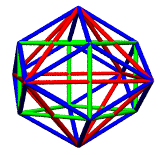
|
| Fuller saw computers playing a paradoxical role in science, temporarily frustrating its advancement while ultimately promising to help it mature. Computers gave a cumbersome, nonvisual mathematical language a new lease on life, thereby postponing its discard in favor of a more visually sophisticated one. The approach taken by the Geometry Supercomputer Project, based at the University of Minnesota, is more reflective of Fuller's hopes for the future. By filling the mathematician's scope with colorful renderings of abstract concepts, Fuller predicted that computers would take us beyond the days of "flying blind on instruments" - his metaphor for the practice of relying solely on cryptic symbolic notations when attempting to comprehend nature's grand designs. |
|
| One impressive example of a visually sophisticated application of synergetic geometry is being developed by researchers at Los Alamos National Laboratories. The model subdivides the globe into a half-million tetrahedral cellular automata and is implemented on the Connection Machine, a massively parallel computer. The tetrahedra are able to twist slightly in response to surrounding energy conditions, depicting flow patterns which researchers hope will realistically simulate weather conditions.[16] This strategy of approximating a sphere using the tetrahedral wedges of a high frequency icosasphere is used in synergetics for deriving the highly accurate Dymaxiontm Map, as well as the geodesic dome. | 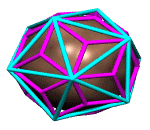
|
| The jitterbug transformation starts with a cuboctahedron and twist contracts it into a regular octahedron with 1/5th the volume, passing through the intermediate icosahedral phase on the way. This latter form of the jitterbug is useful when applied to individual spheres as it shows how they can contract to become between-sphere concave octahedral voids (see 1:1032.00). Fuller uses oscillatory ripplings of such sphere-into-space-into-sphere alternations, the so-called space-filling jitterbug transformation, to suggest new models of omnidirectional energy propagation within the fields of electro- and hydrodynamics. |
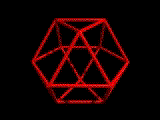
|
| Joseph D. Clinton with Southern Illinois University published FORTRAN algorithms and techniques for intertransforming both polygons and polyhedra in 1971. His NASA-funded study included an investigation of Fuller's jitterbug transformation in its non-space-filling form [17]. Programmer Hal Hildebrand has recently incorporated these algorithms into an object oriented Smalltalk environment. Robert Orenstein of the Buckminster Fuller Institute has also implemented the jitterbug transformation, using a different algorithm in Mathematica. Such "garage-based tinkering" may one day give rise to a whole new genre of "4D CAD" applications, tools for modeling and designing based around Fuller's tetrahedral geometry.[18] | |
| We anticipate the computerization of synergetics in another sense, its packaging into nonlinear formats using "hypermedia." E.J. Applewhite's 4-volume Synergetics Dictionary of 22,000 cross-referenced index cards is an especially attractive candidate for converting into HyperCard, since HyperCard is already based around the index card metaphor. Indeed, HyperCard's operating concepts are useful for elucidating the metaphorical language of synergetics itself. The concept of instantaneous "links" interconnecting multiple events (cards) into networks is naturally suggestive of what Fuller meant by "systems [of thought] connecting around in all circumferential directions." The links suggest a geodesic logic of exceptionless principles converging in any number of unique special case experiences. | |
|
Fuller saw the computer as an extension of the human
brain, as another kind of storage and retrieval mechanism. Both
access their data sequentially and never instantaneously because
both are energetic and energy has a top speed. In Fuller's cosmology,
these inevitable lags in our rates of recall are a source of our
misinterpreting the exceptionless principles, with the result
that each of us experiences a uniquely individual universe. "We
may define the individual as one way the game of Universe could
have eventuated to date." (2:537.41)
Tinier circuits operate at higher frequencies and so the ideal computer is naturally one which employs ultra-micro components. In the poetic or "omnieconomic" language of synergetics, the high frequency micro extreme is where our time-bound energetic processing (i.e. thinking) comes closest to "taking pictures" of instantaneous perfection. |
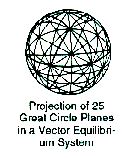
|
| Perhaps it was Fuller's sense of the ordering power of cosmology in culture, plus his identification of computation with the generic navigational or "steering" function of language, which led him to ascribe quasi-mythological attributes to "the computer" in his more narratively historical Critical Path and Grunch of Giants. He saw the computer as an "anti-body"[19] that would keep us from dead-ending our planetary scenario by giving us mastery over the information explosion, freeing us to reintegrate our overspecialized disciplines and to thereby recover our sense of the integrity of the cosmos and of our role within it. |
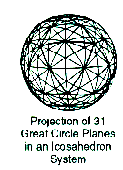
|
ConclusionFuller's life-long quest was to craft a language based around a starkly geometric set of metaphors capable of registering both subtle intuitions and obvious facts. He wanted to invest a full universe of human experience into a unitary and comprehensive discipline instead of compartmentalizing various types of thinking and feeling into disparate academic departments. | |
| Synergetics was very much a work in progress, always being revised. Synergetics 2 corrects some of the errors in Synergetics, fine tunes older concepts, and introduces some new ones, such as the S, T and E modules. While touching on only a few of the points of contact between synergetics and contemporary investigations, the foregoing account will perhaps inspire others to continue Fuller's work by making it their own. | 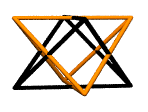
|
|
| |